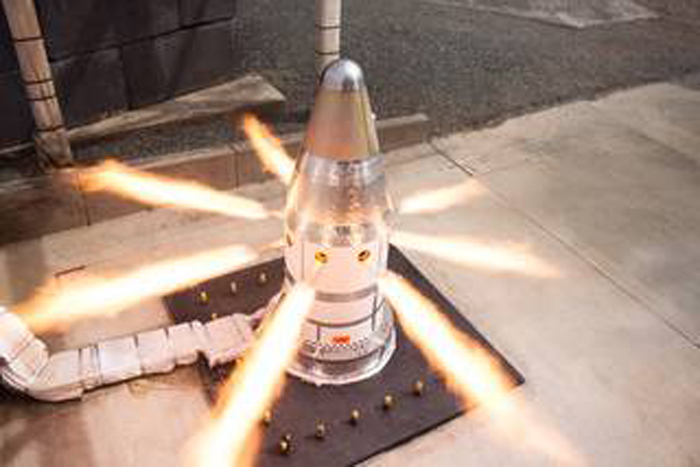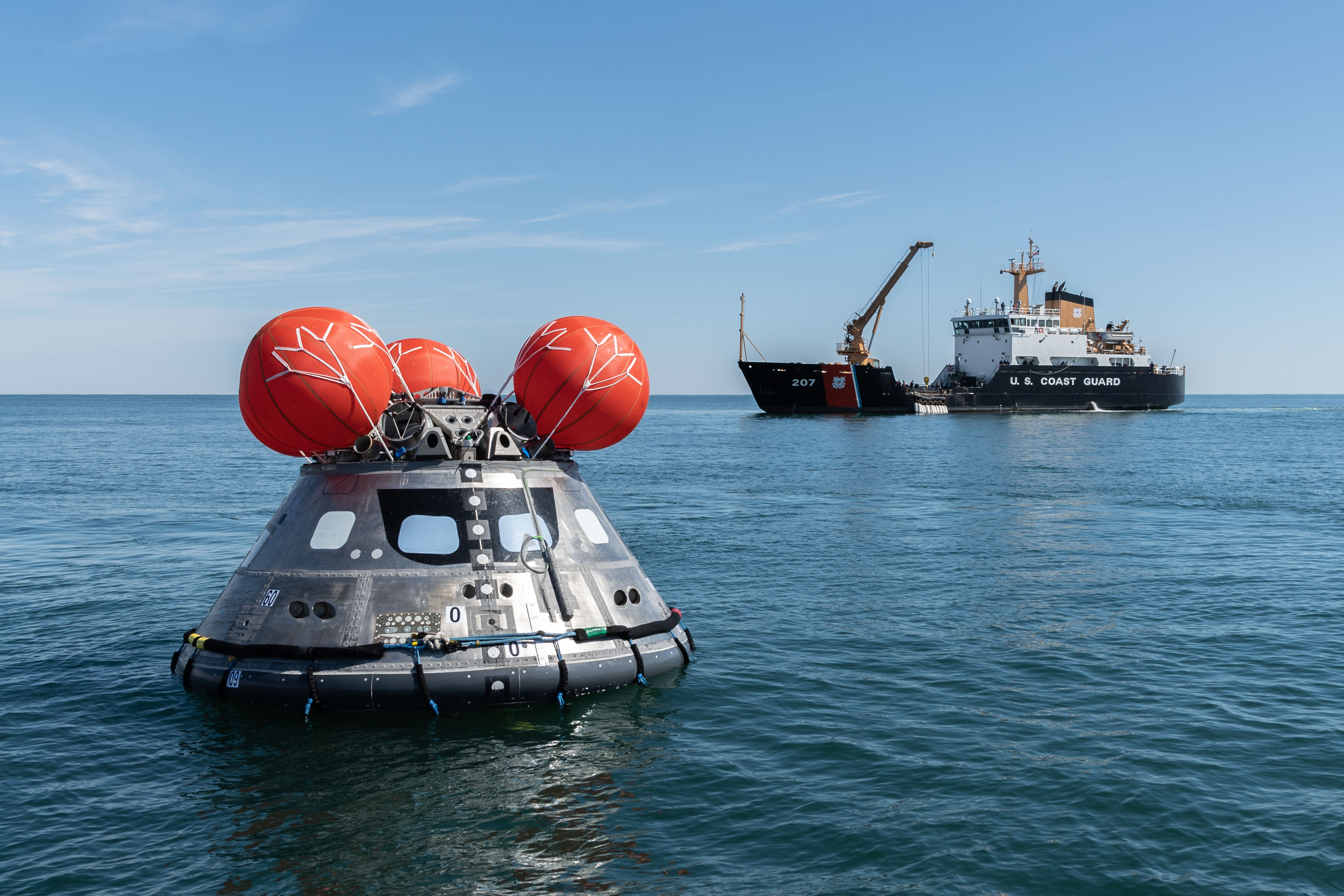NASA's Orion Capsule Emergency Abort System Checks Its Attitude in Test
The attitude control motor for the Orion capsule goes through its first test.
An emergency motor designed to steer future NASA Orion capsule crewmembers to safety ignited during a recent 30-second test and produced over 7,000 lbs. of thrust, according to the space agency.
The Orion Multi-Purpose Crew Vehicle is currently slated to sit atop the Space Launch System (SLS), a superheavy-lift launch vehicle that could one day bring humans back to the moon. The evolving project might even bring the first crew to Mars. For now, Orion will travel on SLS, but there's a possibility it will fly atop a commercial carrier, instead, for its first test flight around the moon — Exploration Mission-1 (EM-1) — if SLS won't be ready for the June 2020 flight.
No matter the vehicle, Orion needs a backup plan if the rocket malfunctions upon exiting low Earth orbit. To prepare for a worst-case scenario, propulsion engineers need to have a keen awareness of the three dimensionality of a launch. So, having the right attitude is important.
Related: Astronauts Zip-Line to Safety in These NASA Emergency Evacuation Test Photos
Attitude is the orientation of a spacecraft in three-dimensional space. It's an element that's essential to navigation, and errors in precision have been known to cause mission failure, like the case of Europe's Schiaparelli Mars lander.
"This test was the first in a series of evaluations aimed at qualifying the attitude control motor for crewed missions," NASA officials said in an agency statement March 25.
The eight valves that recently lit up at the Northrop Grumman facility in Elkton, Maryland, are part of the attitude control motor that could orient the Orion crew capsule and guide its trajectory moving away from the rocket in case of an emergency. Rather than just speeding up faster than the rocket accelerating below it, the eight valves around the motor's cylindrical body would jettison the crew off to one side and away from a dangerous situation.
Get the Space.com Newsletter
Breaking space news, the latest updates on rocket launches, skywatching events and more!

Elishabet Lato, propulsion engineer at Northrop Grumman, and astronaut Randy Bresnik of Expedition 52/53 to the International Space Station, spoke during a Facebook Live event on March 20 to explain the Orion Launch Abort System attitude control motor test.
Each valve is positioned on one-eighth of the cylindrical body, and depending on which direction they need to take, the valves will ignite in milliseconds as hot gas comes out each of those valves to pivot Orion in the opposite direction, according to Lato.
If launch is successful, the Launch Abort System won't be needed any longer. In that case, it would be discarded by the launch vehicle so the spacecraft doesn't have to use its propellant to push unnecessary weight as it continues on its journey.

NASA also reported that the crew module uprighting system (CMUS), which ensures the Orion capsule re-enters Earth right side up, underwent testing last week off the coast of North Carolina, agency officials said in the statement.
- Space Station Photos: Expedition 53 Mission Crew in Orbit
- 'Artificial Gravity' Bed-Rest Study to Track Space Travel's Effects on Human Body
- India Tests Emergency-Escape System for Human Spaceflight (Video)
Follow Doris Elin Salazar on Twitter @salazar_elin. Follow us on Twitter @Spacedotcom and on Facebook.
Join our Space Forums to keep talking space on the latest missions, night sky and more! And if you have a news tip, correction or comment, let us know at: community@space.com.

Doris is a science journalist and Space.com contributor. She received a B.A. in Sociology and Communications at Fordham University in New York City. Her first work was published in collaboration with London Mining Network, where her love of science writing was born. Her passion for astronomy started as a kid when she helped her sister build a model solar system in the Bronx. She got her first shot at astronomy writing as a Space.com editorial intern and continues to write about all things cosmic for the website. Doris has also written about microscopic plant life for Scientific American’s website and about whale calls for their print magazine. She has also written about ancient humans for Inverse, with stories ranging from how to recreate Pompeii’s cuisine to how to map the Polynesian expansion through genomics. She currently shares her home with two rabbits. Follow her on twitter at @salazar_elin.









